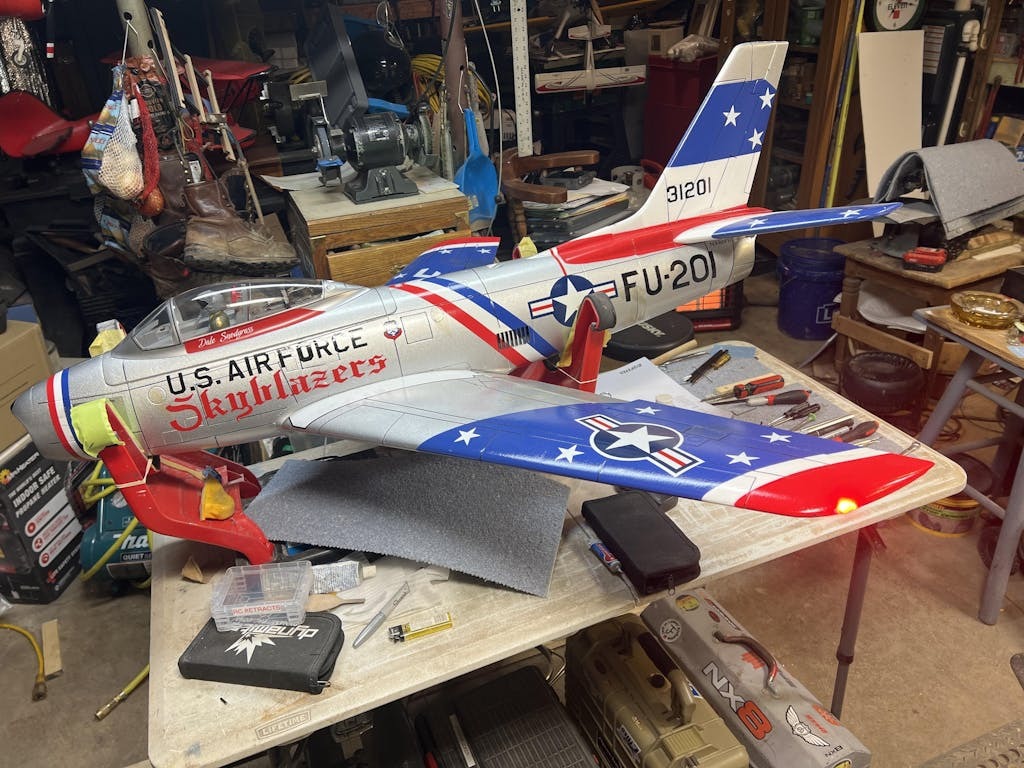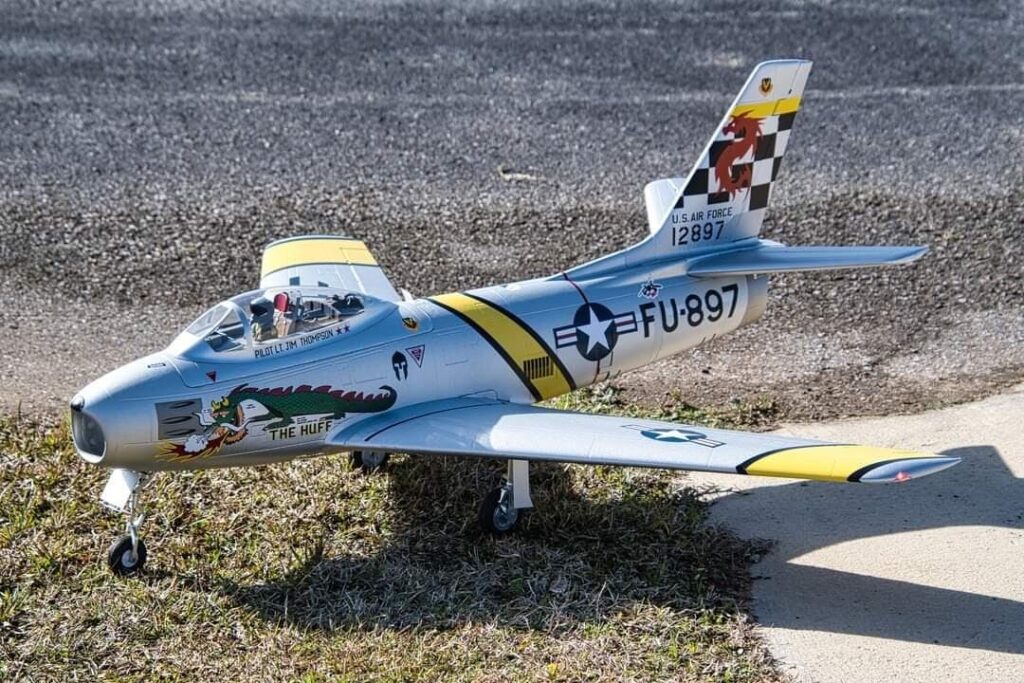Comparing FMS T-28 Trojan Motor vs Market Alternatives

The FMS T-28 Trojan has become a popular choice among RC aircraft enthusiasts, particularly those seeking a reliable warbird trainer. At the heart of this model lies its motor system, which plays a crucial role in determining flight performance, efficiency, and overall flying experience. As the RC market continues to expand with numerous motor options, understanding how the FMS T-28 Trojan’s power system stacks up against alternatives becomes essential for both beginners and experienced pilots.
This comparison explores the motor specifications, performance characteristics, and practical advantages of the FMS T-28 Trojan against competing options in the same category. Whether you’re considering your first warbird purchase, looking to upgrade an existing model, or simply curious about what sets different motor systems apart, this analysis provides the insights needed to make an informed decision. We’ll examine real-world performance, durability factors, and value propositions to help you determine which motor solution best fits your flying style and requirements.
Introduction to FMS T-28 Trojan Motor
The FMS T-28 Trojan comes equipped with a brushless outrunner motor specifically designed to balance power delivery with efficiency for this scale warbird. This motor system represents FMS’s approach to creating an accessible yet capable platform that handles various flying conditions without overwhelming newer pilots. The power plant delivers smooth acceleration and maintains consistent thrust throughout the flight envelope, making it suitable for both gentle cruising and more spirited aerobatic maneuvers.

What distinguishes this motor configuration is its integration with the aircraft’s overall design philosophy. Rather than simply maximizing raw power output, FMS calibrated the motor to work harmoniously with the T-28’s airframe weight, wing loading, and intended flight characteristics. This thoughtful matching means the aircraft exhibits predictable behavior during takeoffs, transitions, and landings—critical factors for pilots building confidence with warbird handling. The motor’s thermal management also proves adequate for typical flight sessions, allowing consecutive flights without extended cooling periods. Understanding these foundational characteristics provides context for evaluating how this system compares to aftermarket alternatives and competing ready-to-fly models in the same class.
Key Features of FMS T-28 Trojan Motor
The FMS T-28 Trojan utilizes a brushless outrunner motor that typically operates in the 3536 size range, offering a compelling balance between torque and efficiency for this airframe. The motor’s KV rating sits in the moderate range, generally between 850-950KV, which provides ample thrust for vertical climbs and aerobatics while maintaining reasonable current draw. This specification choice allows the system to work effectively with commonly available 3S and 4S LiPo batteries, giving pilots flexibility in how they configure power versus flight time.

The motor’s mounting system integrates seamlessly with the firewall, featuring secure bolt patterns that minimize vibration transfer to the airframe. Heat dissipation receives attention through adequate ventilation channels in the cowling, allowing airflow to cool the motor during extended flight sessions. The motor shaft diameter and propeller adapter accommodate standard propeller sizes, with the factory configuration typically running 11-inch to 13-inch props that optimize thrust without overloading the electrical system. Wire gauge and connector quality reflect appropriate standards for the current demands, reducing resistance losses and heat buildup at connection points. The motor’s magnetic timing and winding configuration contribute to smooth startup behavior and linear throttle response, characteristics that prove particularly valuable during precision approaches and low-speed handling where throttle modulation becomes critical for maintaining controlled flight attitudes.
Comparison with Market Alternatives
When evaluating the FMS T-28 Trojan motor against market alternatives, several competing systems emerge as relevant comparisons. Aftermarket motors in the 3530-3548 size range from manufacturers like E-flite, Turnigy, and Racerstar offer similar power outputs but with varying efficiency profiles. Some alternatives feature higher KV ratings around 1100-1200KV, which can deliver increased top-end speed but often at the cost of reduced flight time and increased current draw. These higher-revving options may appeal to pilots seeking aggressive performance, though they typically require more careful battery selection and thermal monitoring to avoid overheating during extended aerobatic sessions.

Competing ready-to-fly warbirds in the same size category provide another comparison point. Models like the E-flite P-47 Razorback and the Dynam T-28 Trojan utilize motor systems with comparable specifications but different tuning approaches. The E-flite offerings generally employ motors with slightly lower KV ratings paired with larger propellers, emphasizing torque and scale-like flight characteristics over outright speed. Dynam’s approach tends toward higher current-capable systems that support more aggressive flying but may demand premium battery investments to achieve optimal performance. The FMS motor strikes a middle ground, offering sufficient power for confident aerobatics while maintaining accessibility for intermediate pilots who haven’t yet invested in high-discharge battery systems. Build quality varies across these alternatives, with some aftermarket options using lower-grade magnets or thinner wire windings that compromise longevity, while premium alternatives may offer marginal performance gains at significantly higher costs that don’t always translate to noticeably better flying experiences for typical recreational use.
Durability and Maintenance Tips
The FMS T-28 Trojan motor demonstrates solid durability under typical recreational flying conditions, with most pilots reporting reliable operation across hundreds of flights when basic maintenance practices are observed. The brushless design inherently reduces wear compared to brushed alternatives, as there are no physical contacts to degrade over time. However, longevity depends significantly on how the motor is operated and maintained. Avoiding sustained full-throttle runs beyond 15-20 seconds helps prevent excessive heat buildup that can demagnetize the motor’s magnets or damage winding insulation. After each flying session, allow the motor to cool naturally before packing the aircraft, and periodically inspect the motor bell for debris accumulation, particularly grass clippings or dust that can obstruct cooling airflow.
Regular maintenance involves checking the propeller mounting security before each flight, as vibrations from loose props can damage motor bearings and create imbalance that accelerates wear. Every 20-30 flights, remove the propeller and cowling to inspect motor mounting screws for tightness and examine the motor shaft for any play that might indicate bearing wear. Clean the motor exterior with compressed air to remove accumulated debris, but avoid spraying directly into bearing seals. Listen for unusual grinding or scraping sounds during startup, which may signal bearing contamination requiring replacement. The motor’s electrical connections benefit from occasional inspection—ensure solder joints remain intact and bullet connectors show no signs of arcing or discoloration. When storing the aircraft long-term, position it to avoid moisture accumulation near the motor, and consider running the motor briefly every few months to redistribute bearing lubricant and prevent seizing from extended inactivity.
Multi-Mode Gyro Technology
The FMS T-28 Trojan incorporates multi-mode gyro stabilization that significantly enhances flight stability across varying skill levels. This system offers selectable modes ranging from full stabilization for beginners to gyro-off settings for experienced pilots seeking unassisted control. The beginner mode actively corrects deviations from level flight, automatically counteracting wind gusts and pilot overcorrections that commonly lead to loss of control. Intermediate mode reduces stabilization intensity, allowing more responsive control inputs while maintaining gentle correction during inadvertent extreme attitudes. Advanced pilots can disable gyro assistance entirely, experiencing the aircraft’s natural flight characteristics without electronic intervention.
What makes this gyro implementation particularly effective is its transparent operation—the system responds quickly enough that corrections feel natural rather than fighting pilot inputs. The technology proves especially valuable during takeoffs and landings, where ground effect and crosswinds can challenge newer pilots. Programming the gyro involves simple transmitter adjustments, typically using a dedicated switch to cycle through modes mid-flight, allowing pilots to progressively reduce assistance as their skills develop. This adaptability extends the aircraft’s usability across the pilot’s learning curve, eliminating the need to purchase separate models as proficiency increases while providing a safety net that builds confidence during the critical early flight hours.
EPP Foam Construction
The FMS T-28 Trojan employs EPP (Expanded Polypropylene) foam construction for its fuselage and critical structural components, a material choice that significantly impacts the aircraft’s crash resilience and longevity. Unlike traditional EPO foam used in many competing models, EPP offers superior flexibility and memory properties that allow the material to absorb impacts and return to its original shape rather than shattering or permanently creasing. This characteristic proves invaluable during hard landings or minor collisions, where EPO-constructed aircraft might sustain irreparable damage requiring component replacement. The foam’s cellular structure distributes impact forces across a wider area, reducing stress concentrations that typically cause catastrophic failures.
Beyond crash resistance, EPP construction contributes to the motor system’s effectiveness by maintaining structural integrity under flight loads. The material’s rigidity-to-weight ratio supports the motor mount and firewall area without flexing that could misalign the power system or create vibrations. The foam’s natural dampening properties also absorb motor vibrations before they transfer throughout the airframe, contributing to smoother flight characteristics and reduced stress on electronic components. While EPP typically adds slight weight compared to EPO, this trade-off delivers tangible benefits in reduced repair costs and extended airframe life, particularly for pilots still developing landing proficiency or those flying in confined spaces where ground contact incidents occur more frequently.
Tricycle Landing Gear
The FMS T-28 Trojan features a tricycle landing gear configuration that dramatically simplifies ground handling compared to tail-dragger alternatives, making it an ideal choice for pilots transitioning from trainers to warbirds. The nose wheel provides directional stability during taxi, takeoff, and landing rolls, eliminating the ground-looping tendencies that challenge pilots flying conventional gear aircraft. This forward weight distribution keeps the aircraft tracking straight naturally, even in crosswind conditions, while the wide main gear stance enhances lateral stability during touchdowns with slight side loads. The gear legs utilize spring steel construction that absorbs landing impacts effectively, protecting the airframe and motor mount from shock loads that could cause misalignment or structural damage.
The gear’s design integrates thoughtfully with the overall aircraft system, positioning the propeller safely above ground level to prevent strikes during nose-high takeoff rotations or rough field operations. Steerable nose wheel linkage connects to the rudder servo, providing coordinated ground steering that responds predictably to rudder inputs during taxi operations. The main gear attachment points distribute landing forces across reinforced sections of the fuselage, preventing localized stress concentrations. While the fixed gear configuration creates additional drag compared to retractable systems, this simplicity eliminates mechanical complexity and potential failure points, ensuring reliable operation across varying field conditions and reducing maintenance requirements that might otherwise distract from flying enjoyment.
Final Thoughts on the FMS T-28 Trojan Power System
The FMS T-28 Trojan motor system delivers a well-balanced power solution that prioritizes reliability and accessibility over outright performance extremes. Its moderate KV rating, thoughtful thermal management, and integration with the airframe create a flying experience that suits intermediate pilots while remaining forgiving enough for those transitioning from basic trainers. When compared against market alternatives, the FMS motor may not dominate in any single performance metric, but its combination of adequate power, reasonable efficiency, and proven durability positions it as a practical choice for recreational warbird flying.The supporting features—multi-mode gyro stabilization, EPP foam construction, and tricycle landing gear—work synergistically with the motor system to create a cohesive package that reduces barriers to successful warbird operation. While aftermarket motor upgrades or competing models might offer marginal performance gains, the FMS T-28 Trojan’s factory configuration provides sufficient capability for the vast majority of typical flying scenarios without demanding premium batteries or extensive tuning knowledge. For pilots seeking a dependable rc airplane motor system that balances performance with practicality, the FMS T-28 Trojan represents a solid foundation that delivers consistent results across hundreds of flights with minimal intervention.




